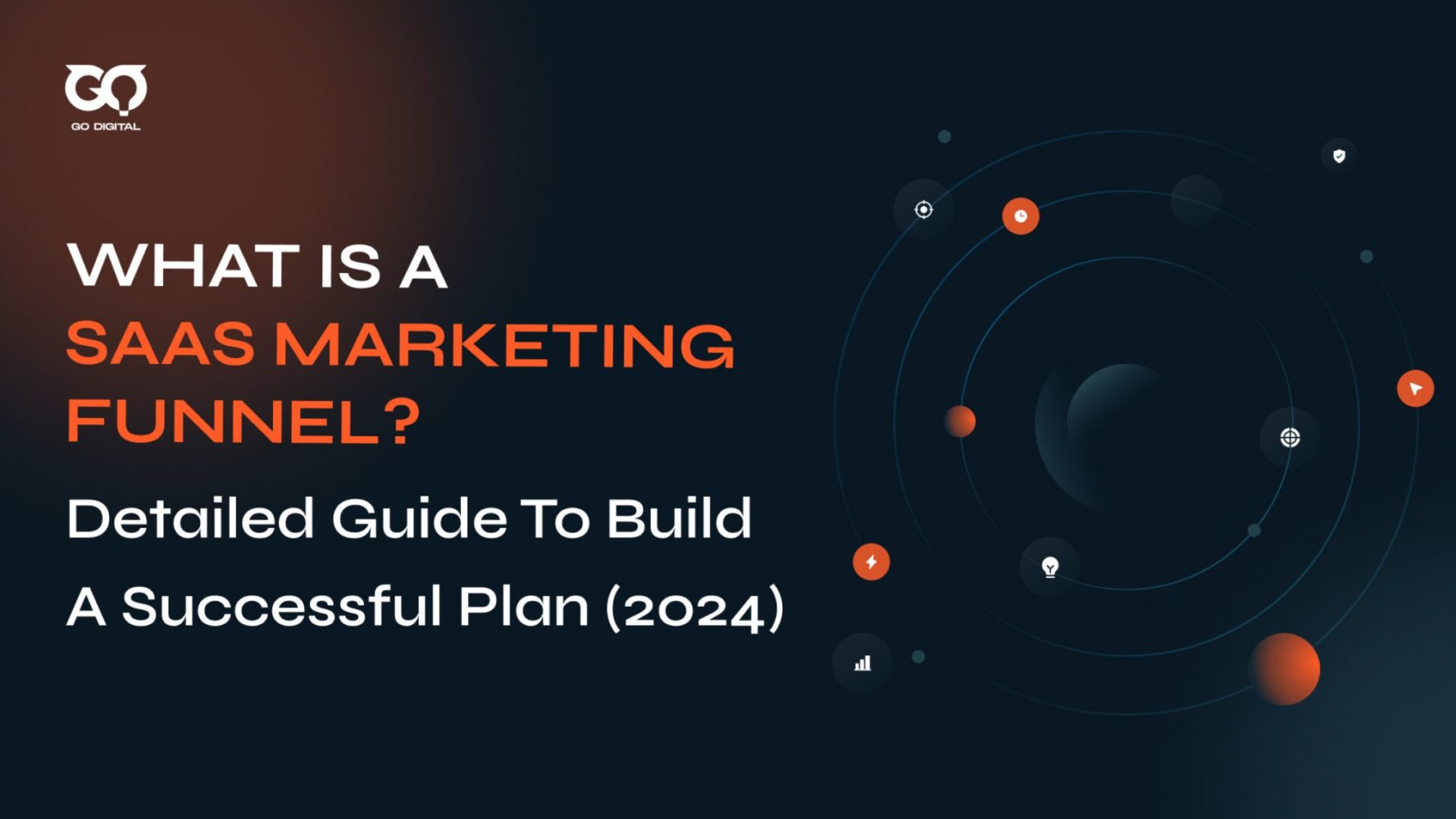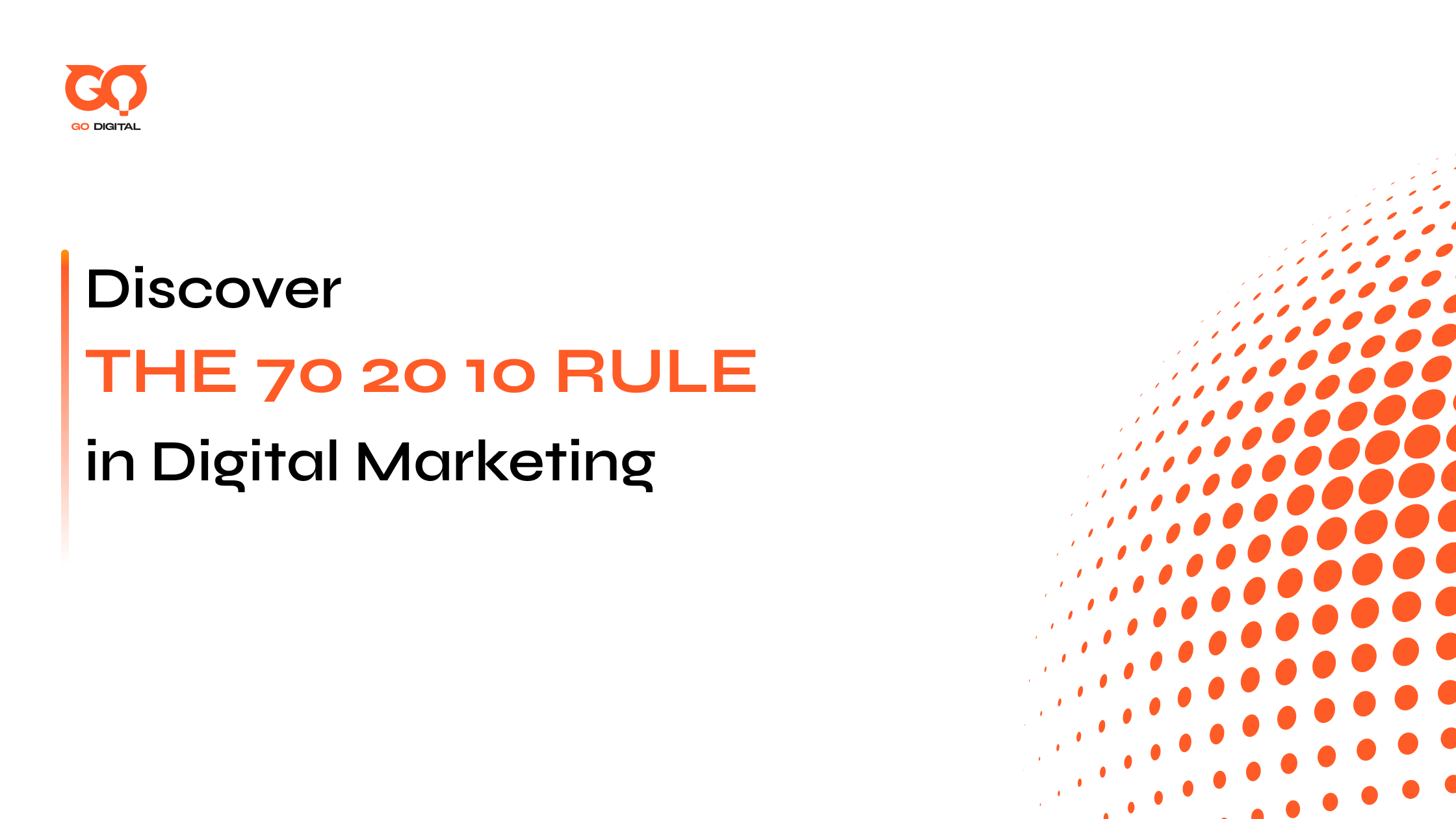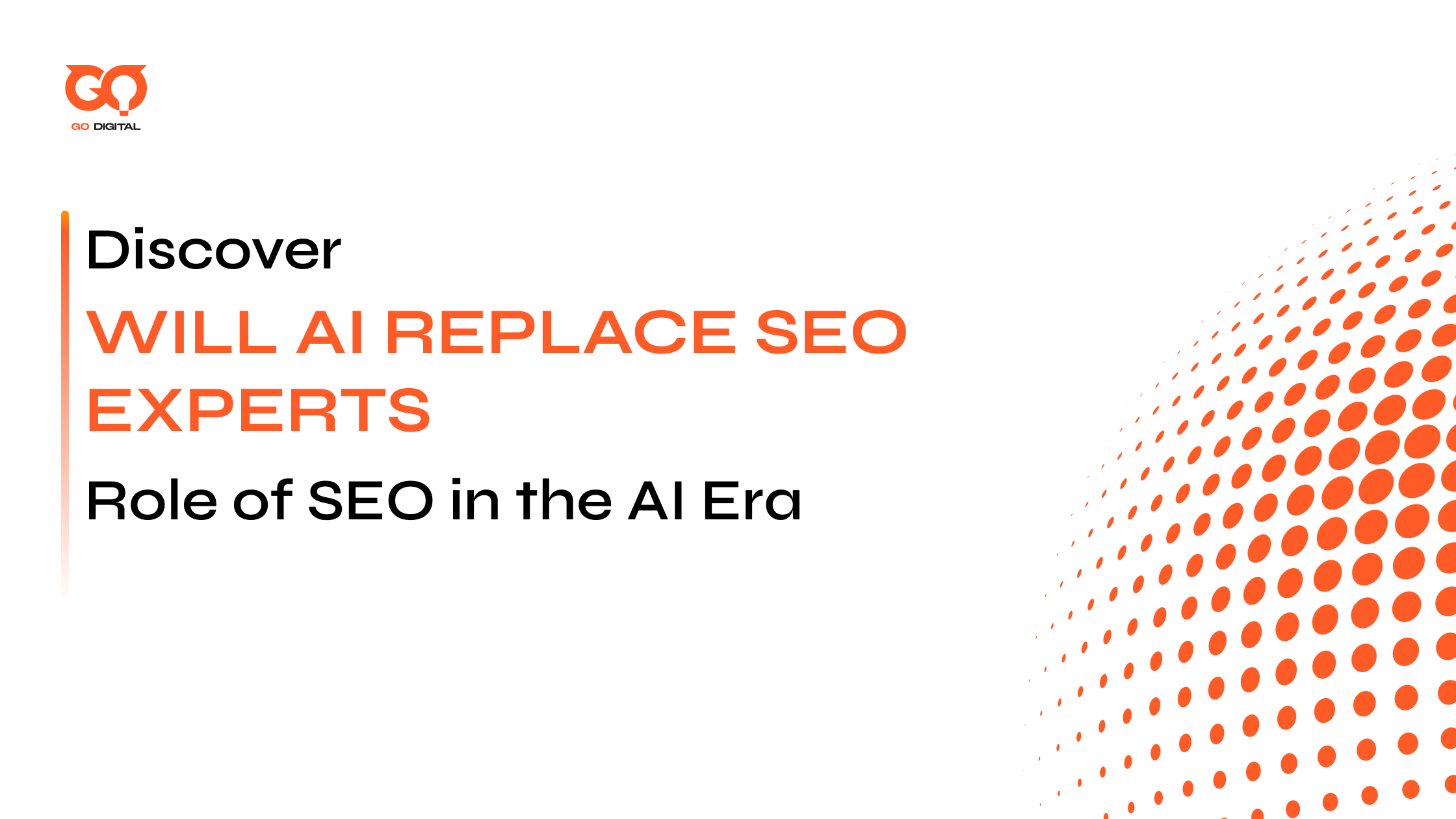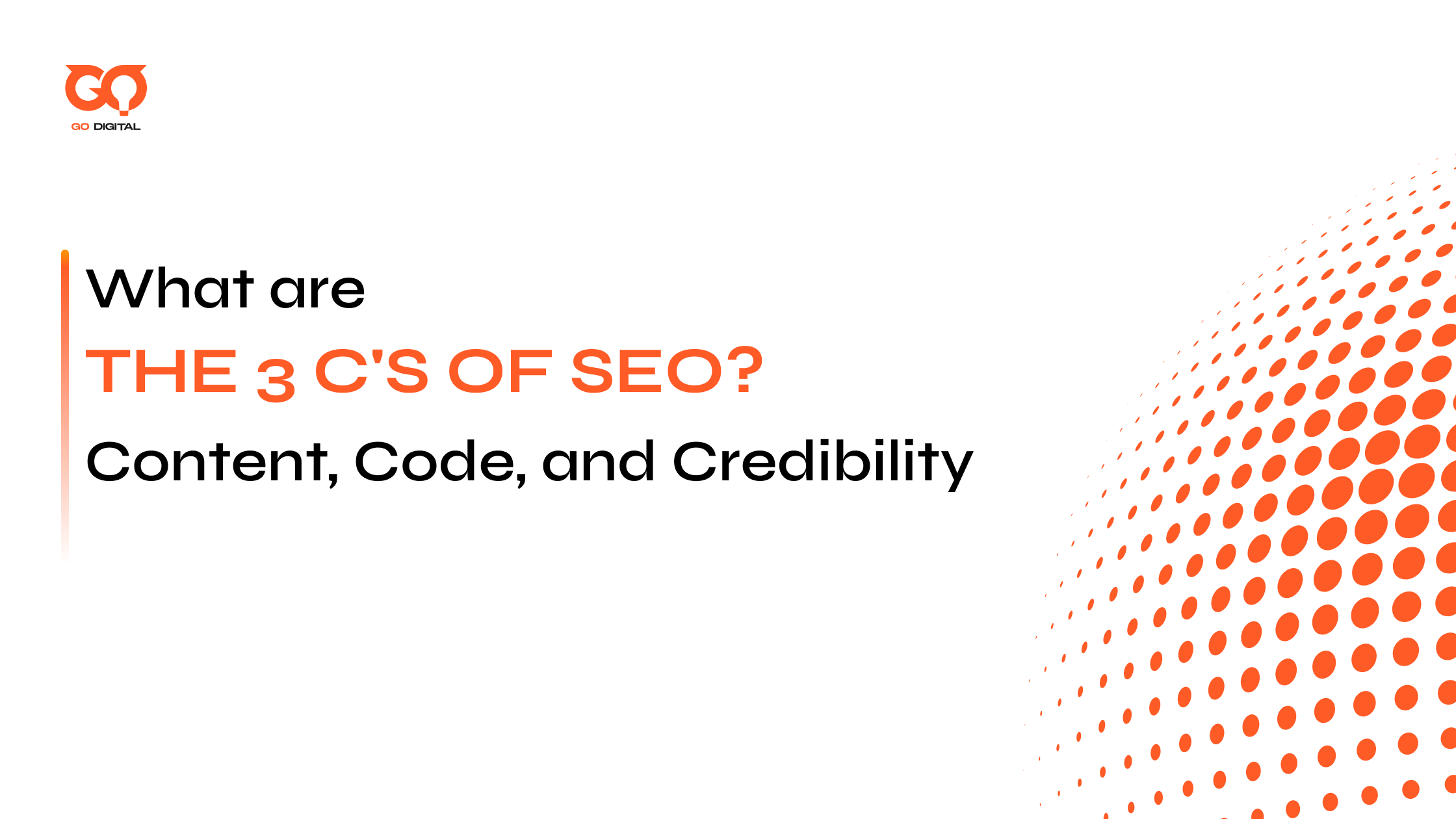If you’re aiming for a thriving SaaS business, understanding the SaaS marketing funnels is key, without questions. Yet, many still confuse it with the sales funnel—leaving gaps in their strategy. Here’s where you can stand out.
In this article, we will together learn about the right definition and how to use it to build a plan to achieve desired profits. Let’s start!
What Is Saas Marketing Funnels?
A SaaS marketing funnel is a process that shows how a user moves from first hearing about a product to becoming a loyal, paying customer.
This funnel is key to a SaaS company’s marketing strategy, focusing on both attracting and keeping customers. Since SaaS businesses rely on subscriptions for recurring revenue, renewing these subscriptions is important to cover the cost of acquiring new customers.
The funnel has five stages: awareness, engagement, desire, conversion, and retention. By improving each stage, companies can increase the number of customers who stay and pay over time, which is important for their growth.
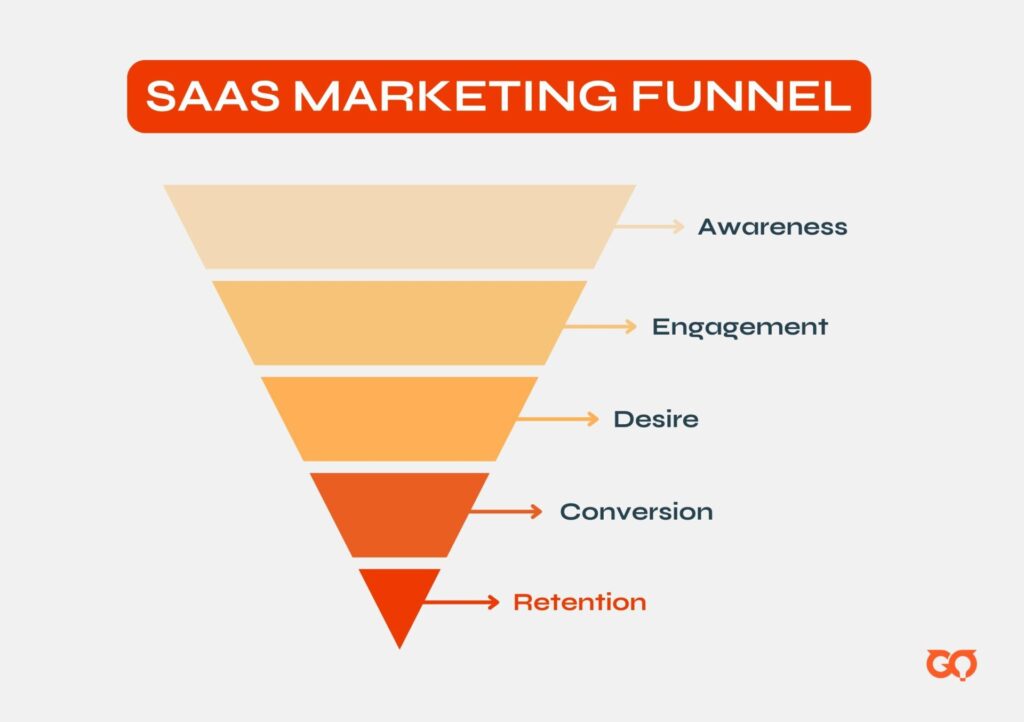
Why Is Saas Marketing Funnels Important For Your Business?
B2B tech companies dedicate an average of 15% of their annual budget to marketing yearly. Understandable, since SaaS marketing funnels and strategies help your business attract potential customers, generate leads, and boost revenue. It plays a key role in acquiring new customers, keeping them around, and increasing your overall income.
| 🎯 Key benefits |
| Generate leads: Creating awareness and attracting potential customers, ensuring a steady pipeline of prospects to engage and convert. Acquire customers: Guiding prospects through the sales pipeline and turning them into loyal advocates of your products and services. Increase revenue: Driving overall revenue by tracking metrics like customer acquisition cost and monthly recurring revenue, enabling you to develop sustainable pricing strategies and make informed business decisions. Marketing Funnels are not only used in the SaaS field; this model is also employed to effectively market a software product. |
The Differences Between Saas Marketing Funnels And Saas Sales Funnels
The difference between a SaaS marketing funnel and a SaaS sales funnel lies in the purpose and stages of the customer journey they focus on.
The purpose of the SaaS sales funnels is to convert leads into paying customers by guiding them through stages focused on decision-making and purchase. While the SaaS marketing funnel aims to attract, engage, and nurture leads throughout their entire journey, from awareness to loyalty.
So, in the SaaS sales funnel, there will be components designed to achieve high conversion rates, such as pricing discussions, product demos, and onboarding support. In contrast, the SaaS marketing funnel includes components like content creation, SEO, social media engagement, and retention strategies to attract and nurture potential customers, ensuring long-term growth and loyalty.
Below is a comparison table that highlights the main differences between a SaaS marketing funnels and a SaaS sales funnels:
| Aspects | SaaS marketing funnel | Saas sales funnel |
|---|---|---|
| Purpose | Generating and nurturing leads | Converting leads into paying customers |
| Stages | Awareness Engagement Desire Conversion Retention |
Lead qualification Product demos Proposals Purchase |
| Focus | Attracting potential customers with content and campaigns, and educating them about the product | Guiding qualified leads through the sales process and closing deals quickly |
| Goal | To build a foundation for the sales team to take over, starting with many prospects and narrowing down to the most interested ones | To turn interested prospects into actual customers |
Design a Winning Business Strategy By Using the 5 SaaS Marketing Funnel Stages
In this section, we’ll explore the five key stages of SaaS marketing funnels. Understanding these stages is crucial for optimizing the customer journey in a subscription-based business:
Stage 1: Awareness
In the first stage of your SaaS marketing funnel, potential customers become aware of your product. At this point, they might not even discover the problems they’re facing or realize how your product can help.
This stage typically begins when someone discovers your brand through a search engine result or a social media post. Since the goal is to build brand recognition and encourage that initial click, it’s essential to focus on your SEO strategy and consider investing in paid search or advertising to boost visibility.
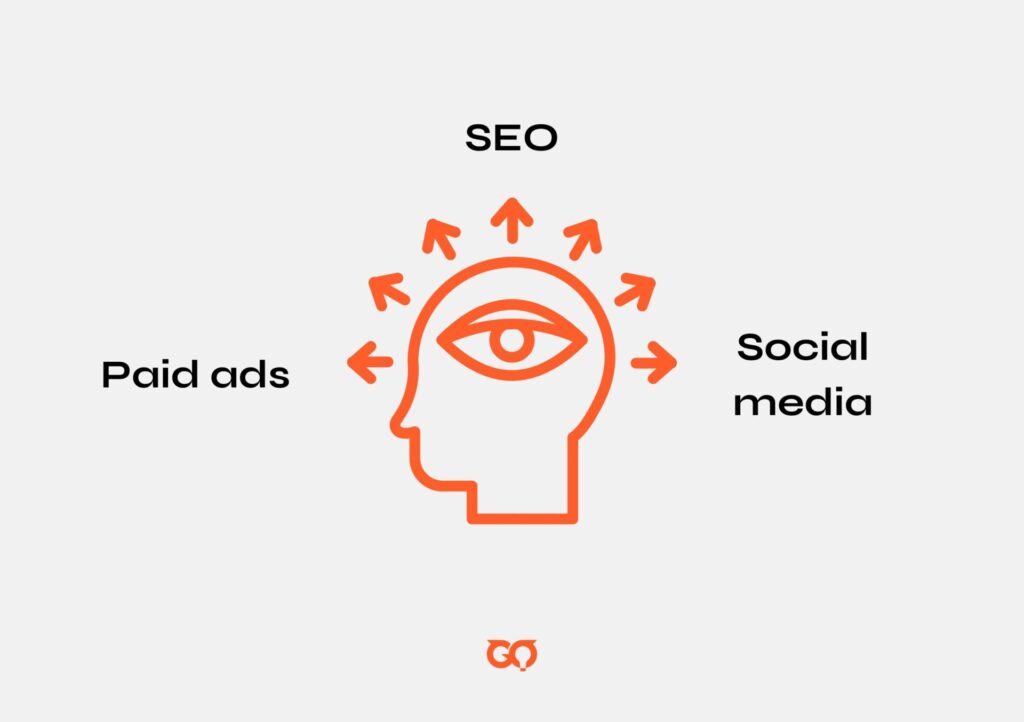
🎯 Main focus:
- Content creation: Create valuable content that resonates with your audience, consider SEO, and share it on social channels; this should include developer communities too.
- Paid advertising: Use platforms like Google AdWords, Facebook ads, Linkedin ads, Tiktok ads to drive targeted traffic to your site with ads.
- Social media engagement: Respond to comments on social media to build relationships with potential customers.
📈 Metrics to track:
| Channel | Key metrics to track |
|---|---|
| SEO | Website Visits: Track the number of visitors to your site from organic search- Search Engine Ranking: Monitor your position on SERPs for target keywords Bounce Rate: Measure how often users leave without interacting |
| Paid advertising | Engagement: Track likes, comments, shares, and brand mentions using tools like Sprout Social Subscribers: Monitor the growth of newsletter, webinar, or podcast subscribers |
| Social channels | CTR (Click-Through Rate): Measure the effectiveness of your ads in driving clicks Website Traffic: Track the traffic generated by your paid campaigns |
⚡Go Digital’s SEO service is a powerful tool for branding, helping your business gain visibility and attract the right audience. Contact us today!
Stage 2: Engagement
In the Engagement stage, users return to interact more deeply with your product, such as by signing up for an email list or newsletter, signaling their growing interest in your company.
At this point, it’s crucial to gather information like email addresses to better understand their pain points and user journey. Monitor how these users engage with your content, as some will move through the funnel more quickly.
For those showing high levels of engagement, tailor your communications to emphasize how your product can help solve their problems. This stage is all about building relationships and nurturing their interest in your product.
🎯 Main Focus:
- Email marketing: Send targeted emails to nurture leads and guide them through the funnel.
- Webinars and video content: Educate and engage your audience by offering in-depth information and interactive sessions.
- Social media engagement: Build relationships and increase brand visibility by actively participating in social media conversations.
- Blogging and guest posting: Create valuable content that attracts and retains potential customers, while also enhancing your SEO.
📈 Metrics to track:
| Channel | Key metrics to track |
|---|---|
| Email marketing | Open Rate: Percentage of recipients opening emails. Click-Through Rate (CTR): Percentage of clicks on links within the email. |
| Webinars and video content | Sales Call Frequency: Number of data (calls/messages) made to webinar participants or video viewers |
| SEO | Time Spent on Page: Average time visitors spend on a page Lead Response Time: Time taken to respond to inquiries generated from SEO efforts Click-Through Rate (CTR): Percentage of clicks on your website’s links from search engine results pages (SERPs) |
Structuring your funnel is far more effective when guided by a clear marketing blueprint. The B2B SaaS marketing plan template provides step-by-step instructions for aligning content, channels, and KPIs to every part of the SaaS buyer’s journey.
Stage 3: Desire
In the Desire stage, prospects are seriously considering making a purchase. They may engage with your sales team to discuss pricing, onboarding support, and may request a demo.
By this point, they’ve evaluated all options and are ready to choose a SaaS solution. This stage is crucial as prospects are now warmed up and more interested in your offering. They may be ready for a demo, free trial, or want to see how your product can solve their pain points.
🎯 Main focus:
- Product demos: Showcase your product’s features and benefits to address specific pain points.
- Free trials: Allow prospects to experience your product firsthand, increasing their confidence in making a purchase.
- Case studies: Provide real-world examples of how your product has successfully solved similar problems for other customers.
- Social proof and testimonials: Highlight positive feedback and experiences from existing customers to build trust.
- Sales calls and meetings: Engage directly with prospects to answer questions, discuss pricing, and tailor solutions to their needs.
📈 Metrics to track:
| Channel | Key metrics to track |
|---|---|
| Product demos | Demo Requests: Number of users requesting a personalized demo. |
| Free Trials | Free Trial Downloads: Number of users signing up to try out your product.- Free Trial Activation Rate: Percentage of users who interact with the downloaded trial. |
| Case studies | Engagement: How prospects respond to or interact with case studies (e.g., views, shares, inquiries). |
Stage 4: Conversion
In the Conversion stage, a prospect becomes a paying customer by making their first purchase or completing a key milestone, like signing up for a paid version of your product. For example, if a customer subscribes to a monthly plan for your software, they have converted.
Some important questions:
- How many users who entered the funnel reached the conversion stage?
- Is there a change in the churn rate (customers leaving after conversion)?
These questions help you evaluate if your SaaS funnel needs adjustments to improve conversions. Additionally, gathering customer feedback at this stage can provide insights into what worked or why some users didn’t convert, helping you refine the customer journey.
🎯 Main focus:
- Targeted landing pages: Create specific pages that directly address the prospect’s needs and guide them toward conversion.
- Clear pricing structure: Ensure your pricing is transparent and easy to understand, helping prospects make informed decisions.
- Seamless onboarding process: Make it easy for new customers to get started with your product, enhancing their experience and reducing friction.
- Sales follow-up and customer support: Provide timely follow-ups and support to address any concerns and ensure a smooth transition to becoming a paying customer.
📈 Metrics to track:
| Channel | Key metrics to track |
|---|---|
| Targeted Landing Pages | Conversion Rate: Proportion of users who make a purchase or download |
| Clear Pricing Structure | – Number of Purchases: How many customers pay for a product or subscription- Customer Acquisition Cost: Cost to acquire a converting user |
| Sales Follow-Up and Customer Support | Churn Rate: Track whether follow-ups and support reduce the churn rate. |
Stage 5: Retention
In the Retention stage, the focus is on keeping existing customers satisfied to ensure they continue their subscriptions. Unlike traditional funnels, SaaS relies on recurring revenue, making retention crucial.
This stage involves building customer loyalty and turning users into product advocates. It’s also a chance to upsell or cross-sell additional products. Encourage referrals by offering incentives, and if you see a rise in churn rate, gather feedback to improve their experience. The goal is to maximize lifetime value and build long-term loyalty.
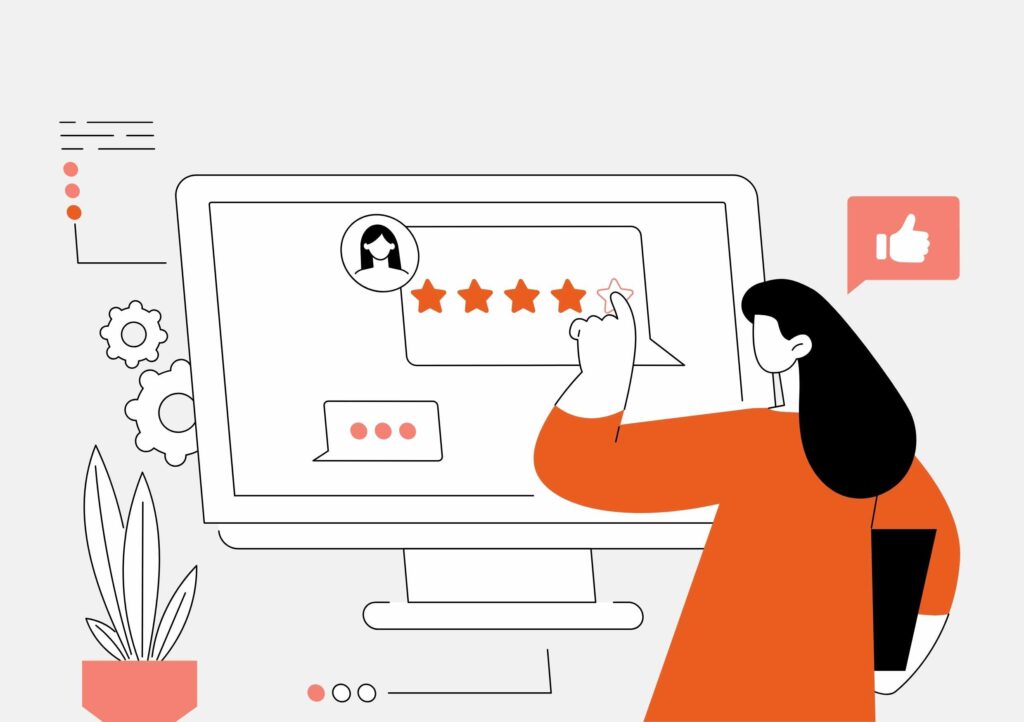
🎯 Main focus:
- Regular customer feedback: Continuously gather insights to understand customer needs and improve their experience.
- Customer support and troubleshooting: Provide timely and effective support to resolve any issues and keep customers satisfied.
- Continuous product improvement: Regularly enhance your product based on customer feedback and evolving needs to maintain engagement.
- Promoting upgrades and upsells: Encourage customers to explore premium features or additional products to increase their value and satisfaction.
📈 Metrics to track:
| Channel | Key metrics to track |
|---|---|
| Regular Customer Feedback | – Net Promoter Score (NPS): Measures customer loyalty to your brand and products- Customer Satisfaction Score (CSAT): Tracks how satisfied customers are with your product |
| Customer Support and Troubleshooting | Churn Rate: Percentage of customers who stop subscribing after experiencing support issues |
| Continuous Product Improvement | Customer Retention Rate: Measures the proportion of converted users who remain customers over time |
| Promoting Upgrades and Upsells | Customer Lifetime Value (CLTV): Total revenue expected from a single customer account |
How To Optimize Saas Marketing Funnels For Your Business?
How to know if your Marketing funnel is working
To determine if your SaaS marketing funnels is effective, you need to track key metrics at each stage such as arr growth rate of the funnel. These metrics will help you see if your strategies are successfully driving leads and converting them into paying customers.
By measuring these metrics, you can identify what’s working well and where there might be issues, allowing you to adjust your approach to better achieve your goals.
Tips to optimize effectively
To effectively optimize your SaaS marketing funnels, begin with data analysis. Examine metrics to identify where users are dropping off, such as after signing up for a free trial. This could indicate issues in the onboarding process.
Next, identify and address problem areas. For instance, if feedback indicates that users find the interface confusing, leading to high churn during the Activation stage, focus on improving the UX to reduce churn. Strategize with insights by directing more SEO and email marketing efforts toward high-converting landing pages identified in your data.
Implement continuous optimization by introducing CTAs with trackable links in your email campaigns, such as links to product demos, to measure which content drives the most conversions.
Consider leveraging expert help by partnering with a SaaS marketing agency like Go Digital.
Finally, focus on retention by observing patterns, such as customers churning after three months. Introduce a personalized check-in email at the two-month mark to offer additional support and encourage continued use.
💡Want to dig even deeper into building an effective and high ROI marketing funnel? Learn more from Alex’s guide “Proven Funnel Formula That Has Made MILLIONS”:
Bottom Line
SaaS marketing funnels is a roadmap for guiding potential customers from initial awareness to becoming loyal advocates of your product or service. Understanding and optimizing each stage of the funnel is crucial for driving revenue, increasing customer retention, and fostering long-term business growth.
Looking for a partner to build and optimize your SaaS marketing funnel? Go Digital is an award-winning marketing agency specializing in SaaS growth strategies and helping businesses like yours achieve stellar results. Get in touch with us now and let’s build a strategy together!


